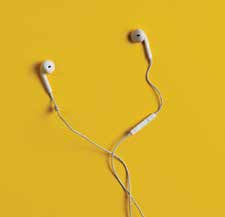University of Washington researchers have created a screening system for hearing that uses a smartphone and low-cost earbuds rather than the commercial devices currently in use. The system is detailed in an article published in Nature Biomedical Engineering (Nat Biomed Eng. 2022;6:1203–1213).
The hearing system listens for otoacoustic emissions (OAEs), nearly inaudible sounds that are produced by outer hair cells in a small part of the cochlea during stimulation by soft clicking sounds. The vibration of the hair cells echoes back into the middle ear, providing information about their function. OAE testing is often used to screen infants for hearing difficulties, but the cost of the testing equipment can present a barrier to screening in underserved areas.
The device uses an off-the-shelf microphone and earbuds connected to a smartphone through a headphone jack. When activated, it sends two pure tones through each earbud and algorithmically detects the OAEs generated by the cochlea and records them through the smartphone’s microphone. The cost of the system is approximately $10.
Researchers performed the clinical study on 201 pediatric ears across three healthcare sites. The device detected hearing loss in the infants with 100% sensitivity and 88.9% specificity, which compares favorably to current commercial devices.
